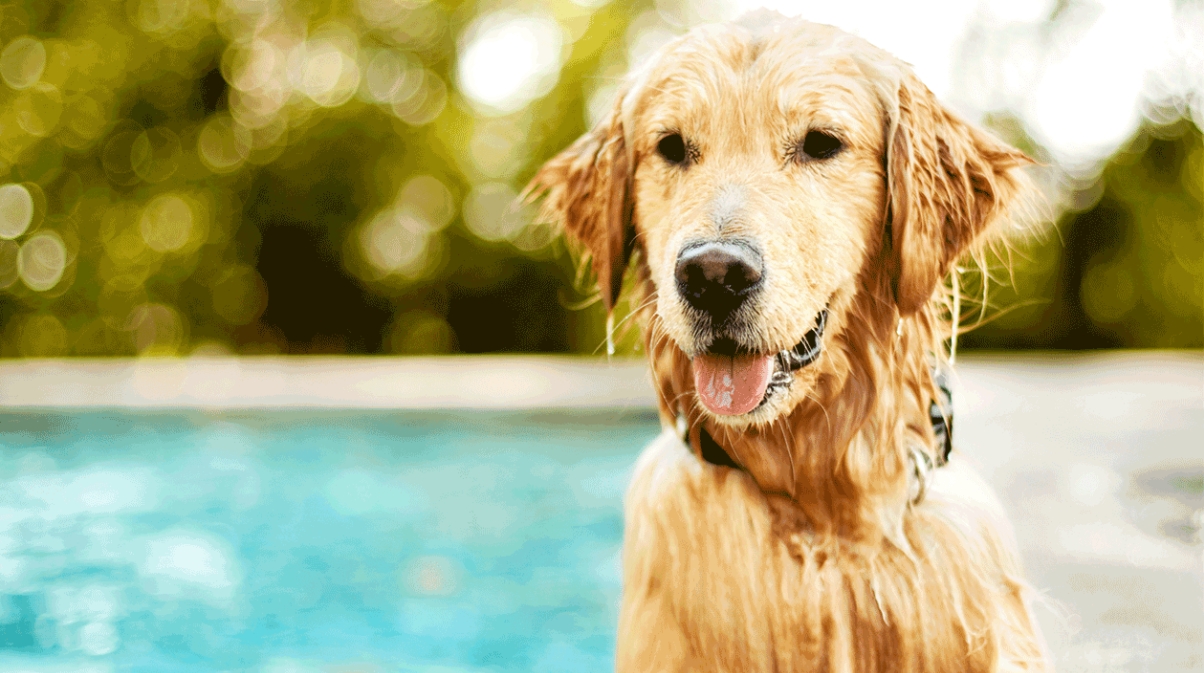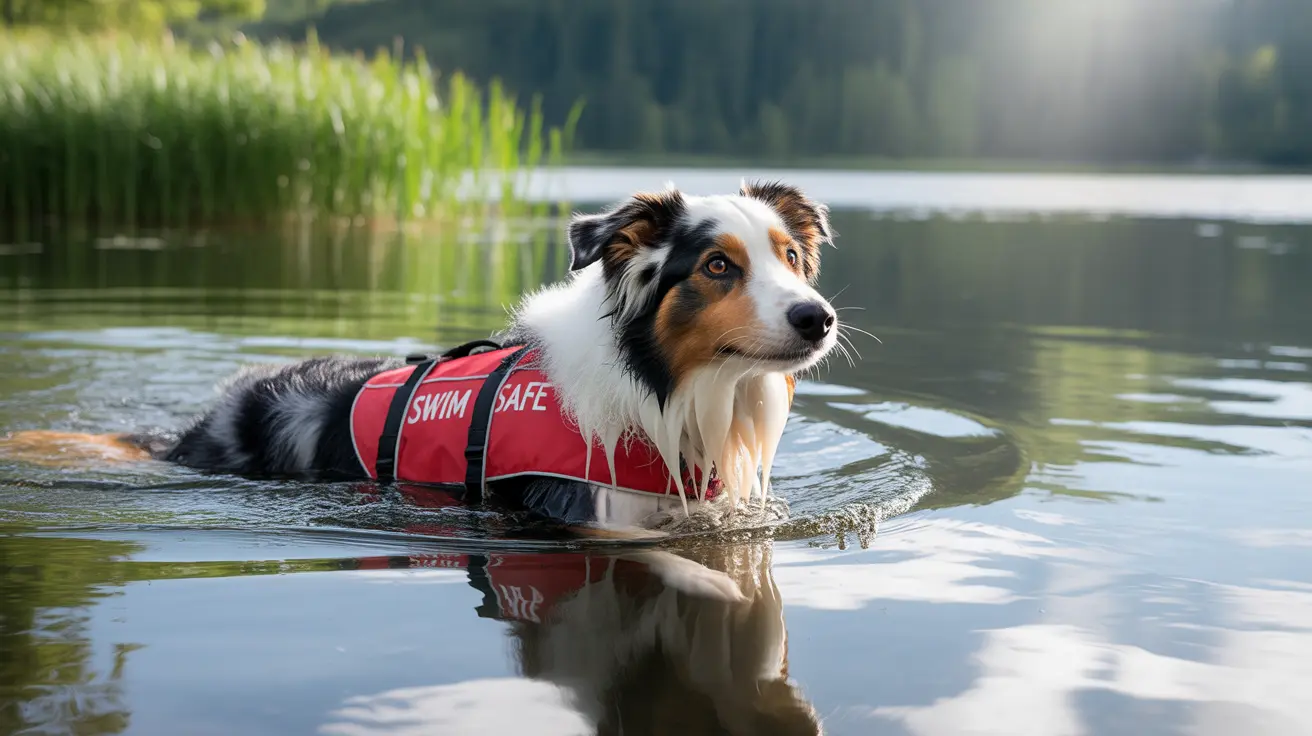If you want your dog to enjoy the water without any worries, introducing them to swimming safely is key. You might be wondering how to make this new experience fun and stress-free for your furry friend.
Swimming is great exercise and can keep your dog cool on hot days, but jumping in too fast or in deep water can be risky. You’ll discover simple, effective steps to help your dog get comfortable in shallow water. By following these tips, you’ll build your dog’s confidence and keep them safe every step of the way.
Ready to make swimming a happy, safe adventure for your dog? Let’s dive in!

Credit: nutram.com
Choosing The Right Location
Choose a shallow areawhere your dog can stand easily. This helps your dog feel safe and confident. Calm water is best because it has fewer waves. Waves can scare dogs and make swimming hard.
Check the water cleanliness. Avoid places with trash, strong smells, or green slime. Dirty water can cause infections or stomach problems. Clear water lets you see your dog’s movements and any hidden dangers.
| Factor | Why It Matters | What to Look For |
|---|---|---|
| Safe Shallow Areas | Helps dog stand and feel secure | Water no deeper than your dog’s chest |
| Calm Water Conditions | Reduces fear and difficulty swimming | Little to no waves or currents |
| Cleanliness and Water Quality | Prevents infections and sickness | Clear water, no trash or algae |
Preparing Your Dog
Start by letting your dog explore shallow water slowly. Let them walk and splash to feel comfortable. Use calm, soft words to encourage them. Never rush this step. A life vesthelps keep your dog safe and buoyant. Choose one that fits well and is easy to fasten. Check the vest often during play. Before swimming, ensure your dog is healthy. Look for signs of tiredness or stress. Make sure your dog is up to date on vaccines. Keep fresh water nearby for drinking. Watch your dog closely for any discomfort or fear.
Step-by-step Introduction
Start by letting your dog stand in shallow water, just touching their feet. This helps them feel safe and not scared. Use a calm voice and gentle petting to make them comfortable. Let your dog explore the water at their own pace.
Encourage gentle paddling by guiding your dog’s paws slowly in the water. Praise every small step with soft words or treats. Never push your dog too hard. Keep the mood fun and relaxed.
Keep swimming sessions short, about 5 to 10 minutes. Short times help your dog stay happy and not tired. Stop if your dog shows signs of stress or fear. Gradually increase time as your dog gets used to water.

Credit: www.aspcapetinsurance.com
Safety Tips During Swimming
Always watch your dog closelywhile swimming. Stay near the water edge to help quickly if needed. Dogs can get tired fast, so keep sessions short.
Avoid places with strong currents or waves. These can push your dog under or make swimming hard. Choose calm, shallow water for first swims.
Look for signs your dog is tired or stressed. Heavy panting, slow swimming, or trying to climb out often means it’s time for a break. Rest keeps swimming safe and fun.
Post-swim Care
Rinse your dog with fresh water after swimming to remove chlorineor salt. These can irritate your dog’s skin and coat. Use a gentle spray or a bucket of clean water for rinsing. Make sure to wash areas like paws, belly, and ears carefully.
Dry your dog well using a soft towel. Keep your dog warm, especially in cool weather. A warm blanket or a cozy spot helps prevent chills. Drying also reduces the chance of skin infections.
Give your dog a treator extra love to reward good behavior. Positive reinforcement helps your dog enjoy swimming more. Praise and treats make the experience fun and safe for your pet.

Credit: www.petscare.com
Frequently Asked Questions
How Do I Prepare My Dog For Swimming In Shallow Water?
Start by introducing your dog to calm, shallow water slowly. Use positive reinforcement with treats and praise. Let your dog explore at their own pace. Always supervise closely to build confidence and ensure safety during initial swimming sessions.
What Safety Gear Should My Dog Wear While Swimming?
A dog life jacket is essential for safety. It provides buoyancy and visibility. Choose a well-fitted jacket designed for dogs. Even strong swimmers benefit from extra protection in open or shallow water areas.
How Long Should My Dog Swim In Shallow Water Initially?
Limit initial swim sessions to 5-10 minutes. Short sessions prevent fatigue and build comfort. Gradually increase time as your dog gains confidence and strength. Always monitor your dog for signs of tiredness or distress.
Can All Dog Breeds Learn To Swim In Shallow Water?
Most dog breeds can learn to swim, but some need extra care. Breeds with short legs or heavy bodies may struggle. Introduce swimming gently and watch their response. Consult your vet if unsure about your dog’s swimming ability.
Conclusion
Introducing your dog to swimming in shallow water takes patience and care. Start slow, let your dog get used to the water. Always stay close and offer praise for calm behavior. Use a life vest for extra safety if needed.
Watch for signs of tiredness or fear. Keep sessions short and fun to build confidence. This helps your dog enjoy swimming safely and happily. With time and gentle guidance, your dog can love the water too. Safe swimming creates great moments for both you and your pet.





